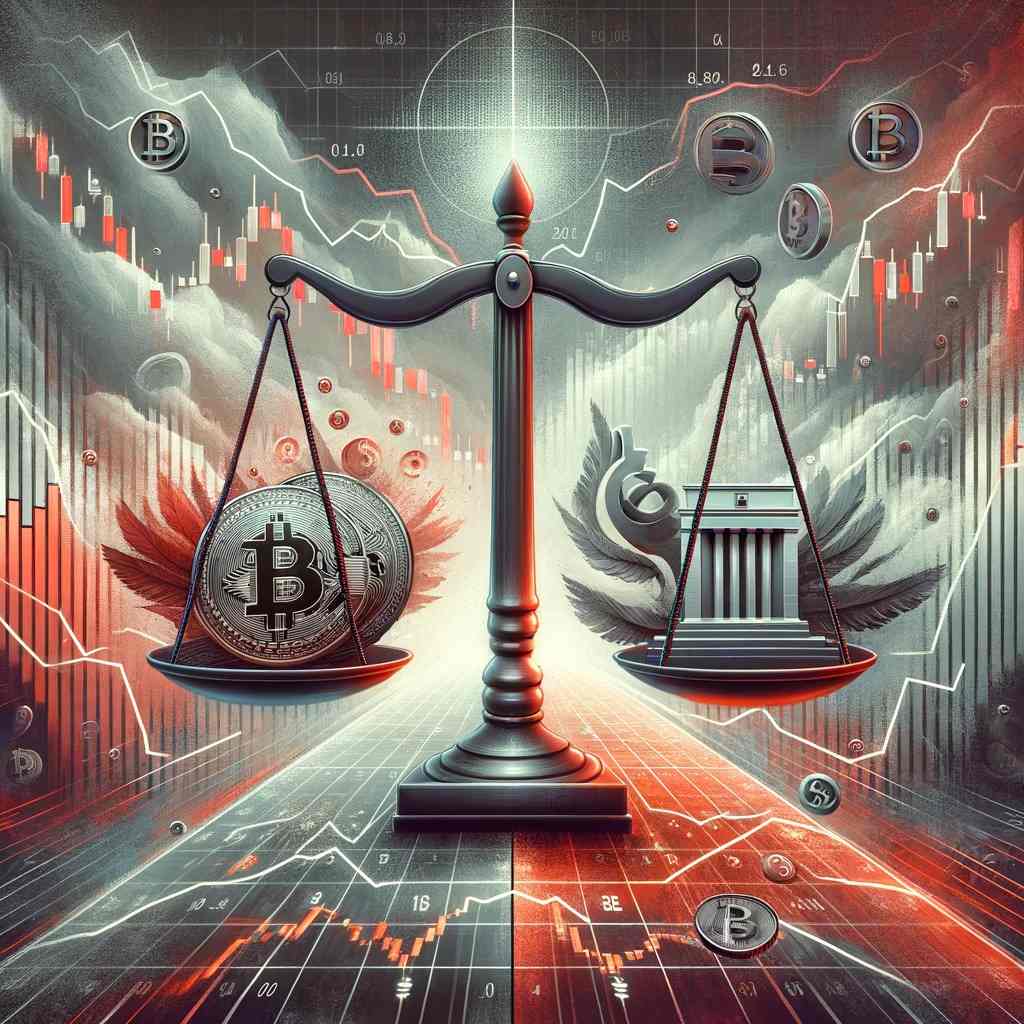
As the world economy stands on a precarious edge, the possibility of stagflation, where sluggish economic growth and high inflation occur simultaneously, has become a real concern. This analysis will delve into the role of the Federal Reserve (Fed) in managing these challenges, the potential impact on both stock markets and the enigmatic world of Bitcoin.
Facing the Inflation Challenge
Inflation rates are climbing, driven by various factors such as logistical disruptions, the rebound from pandemic lows, and extensive government spending. The Fed is now cornered into making tough decisions—raise interest rates to fight inflation and risk economic slowdown, or maintain low rates and watch prices continue to soar. This delicate balance is crucial as any misstep could trigger stagflation, reminiscent of the 1970s.
Other Articles
A Look Back and Forward: Historical Insights and the Current Economic Scenario
Stagflation isn’t a new phenomenon. The 1970s saw similar economic turmoil due to global disruptions and sharp policy shifts. Today’s scenario is compounded by digital advancements and the role of cryptocurrencies like Bitcoin. Understanding these historical patterns helps us predict possible outcomes and prepare accordingly.
The Stock Market at a Turning Point
The U.S. stock market, which has benefited from years of low interest rates and quantitative easing, now faces uncertainty. As the Fed hints at tightening monetary policies, investors reevaluate their risk and adjust their portfolios, leading to market fluctuations. Key indicators to watch include corporate earnings and liquidity levels, which will hint at the market’s likely direction.
Bitcoin Amid Economic Uncertainty
Bitcoin, often considered a hedge against inflation, is proving to be both a safe haven and a volatile asset. Its performance during economic shifts is under scrutiny, raising questions about its correlation with traditional assets and its role during inflationary times. The coming months will be crucial in defining Bitcoin’s place in investment portfolios.
What Can the Fed Do?
Looking ahead, the Fed might combine interest rate hikes with tapering asset purchases. The effectiveness of these tools in controlling inflation without causing a recession is up for debate. Experts advocate for a nuanced approach that balances immediate economic relief with sustainable growth.
Navigating Investments in Turbulent Times
For investors, the current economic landscape demands cautious strategy and diversification. Beyond stocks and bonds, alternatives like cryptocurrencies are becoming crucial in risk management. The investment landscape in 2024 and beyond may well depend on the Fed’s actions and the broader economic response.
Conclusion
Whether the Fed can control inflation without triggering stagflation is a multifaceted question. The intertwining of economic policies, market reactions, and technological advancements such as Bitcoin introduces additional layers of complexity. As we navigate these uncertain waters, staying informed and adaptable is paramount for all market participants and policymakers.
This article not only explores the economic crossroads we face but also provides actionable insights and strategies for navigating what may be turbulent economic times ahead. The balance between curbing inflation and supporting growth is fragile, with significant repercussions for both traditional and digital markets.







